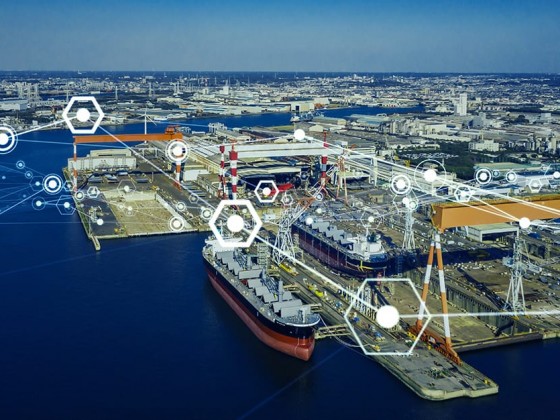by | Kamarul Ariff Omar
ariff@might.org.my

Amsterdam Smart Cities – Mobilizing Cities with the Young
Since executing its entire smart city strategy in 2009, the Dutch capital, Amsterdam, has emerged as a renowned smart city in Europe. The plan, which focuses on smart economy, environment, governance, lifestyle, mobility and people, involves the government, companies, universities, research institutions and inhabitants. The City Data project was developed in partnership with over thirty city organisations and covers topographical, address, land value, healthcare and transportation data. With a population of 4.9 million young people aged 0-25, 234,000 of these youth lives in Amsterdam. The ‘Amsterdam’s City Doughnut’ project aims for a thriving, regenerative and inclusive city, respecting planetary boundaries. Amsterdam’s elementary schools have embraced circular economy ideas in their “Circular & Education” credo. The education system is crucial for developing knowledge, skills, values, performance and attitude transformation, equipping future generations to adopt sustainable lifestyles and future-proof a circular city.
In most nations, local governments and government agencies have traditionally dominated urban planning and development. They have assumed strategic, decisionmaking, and technical implementation responsibilities, but most need more skills to complete a full smart city project. Thus, instead of working in silos, it is vital to incorporate all interest groups to create fresh answers to the issues of modern cities. Young people, who are rapidly expanding in number, and actively seeking more venues and services to realise their potential, are an underrepresented segment in this process.
Youth Impact to the Cities
According to UN Habitat, by 2030, 60 per cent of urban populations will be under the age of 18, a group known as the ‘youth bulge’. Demographic experts believe that a large young population poses difficulties and possibilities for cities, particularly in developing nations. It frees up investment resources, offers job possibilities, and enhances production when supported by favourable conditions.
Youth age groups offer several demographic and socioeconomic issues in their absence. Overall, cities’ substantial proportion of the youth population is anticipated to remain, thus, cities should plan for this demographic transformation to turn challenges into opportunities. The features of the younger generations will affect and eventually redesign cities’ economic, social and environmental models. According to Pew Research Centre research published in 2021, Generation Z and Millennials (born after 1980) are “more likely to make green decisions” than Generation X and Baby Boomers (born between 1946 and 1979).
According to the report, 83 per cent of younger people are aware of responsible waste management, 74 per cent are interested in decreasing their energy use, and 71 per cent are eager to make sustainable buying decisions. They are also less interested in owning a car and are more likely to rely on public transportation or carpooling services. Regarding the digital qualities of smart cities, the International Telecommunication Union (ITU) claimed that young people are now the primary internet users across all geographical regions. While it is tempting to assume that they simply use it to connect to social media, Eurostat data reveals that youth also use the internet for education, job seeking, coding, and engaging with their governments, all of which fall under the purview of smart cities.
To gather potential solutions to future-proof future cities and their inhabitants, the Malaysian Research Accelerator for Technology and Innovation (MRANTI) organised the “Reimagine the Way We Live in Cities” Design Challenge, which attracted 690 youths aged 18 to 30. This demonstrates that Malaysia has a wealth of STI/STEM potential, and programmes like this design competition provide a clear path for these young innovators to pursue their interests in these subjects. Another programme called The Kuala Lumpur Engineering Science Fair (KLESF) aimed at fostering STEM interest among primary and secondary school students supported by various partners including, the ASEAN Academy of Engineering and Technology, IEM, MIGHT, MINDS, TAR UMT and UTAR.
Youth have historically been at the forefront of urban transformation. Each generation tends to establish its own set of values, reacting to those of the preceding generation, while being affected by more extensive social, political and economic situations of the moment. It is during this youthful period, these ideals blend, congregating energy and resources to transform them into lifestyle and societal change. These are just a few examples of how youth are beginning to impact and modify the city’s environment via their everyday activities, pushing our society to become more sustainable and digital.
Youthification
Cities nowadays offer more services, public transportation and housing options than in the past, but rising costs are causing affordability issues. Millennials are making placement selections amid decreasing job stability, increasing expenses and high-density redevelopment in suburban areas. Youthification is driven by a combination of lifestyle, demographic, macro-economic and housing market changes, that require further investigation.
It is time for ‘Youthification’ and discovering youth’s passion! How do we start to engage the young to help us transform today’s cities and, of course, the cities’ future? Start by identifying youth voices, investigate their needs, and then serve as a bridge by linking the youth with our government, industry, and community, allowing them to inspire us. Youths will make significant differences to the process by being enthusiastic, becoming informed and participating actively. Do not underestimate the potential of young participation and action. In this era of digitalisation, gaming platforms can also be utilised to engage adolescents in developing future smart cities with greater transportation connectivity, economic growth, security and safety, health and education enhancement, and the pursuit of a sustainable living environment. Furthermore, social media initiatives can galvanise youth participation to solve environmental problems, battle climate change and raise awareness about the smartness of the cities.
Youthification in shaping future smart cities, can also encourage youth to think strategically and imaginatively about solutions to real-world challenges. Develop the right skills. It has been said that the wishbone will never replace the backbone. If young people are serious about making a difference, we must lay a solid base. Smart cities require a highly educated workforce capable of utilising cloudbased, mobile and social media platforms effectively. It also includes gathering massive quantities of data from every element of urban life, such as transportation, energy and water consumption, healthcare, and public safety, and then transforming that data into actionable insights that result in smarter cities.
Building Future Smart Cities – Together with the New Generation
Promoting youth as stakeholders in sustainable urban development may help to strengthen systems based on human rights and democratic values, while also maintaining equality and non-discrimination. Youth, who constitute most of the population in many cities, seek participation in urban development. When working with and for children, policy makers and planners should consider their skills, knowledge and experience. Youthification may devote some tools to assist policy makers in developing instruments to increase youth participation, as well as training to gain the qualified workforce required for future smart cities.
Generate positive associations between smart cities and the youth by tackling the core causes of inequality that young people face. Cities may benefit from fresh ideas on how a young population can help local economies overcome income inequalities and increase revenue for local governments. Cities may boost their potential for prosperity, equity and innovation, by combining policies that account for a greater young population living in and migrating to urban regions. By ensuring that children have a voice and are acknowledged as stakeholders in legislative frameworks, cities can capitalise on the potential characteristic in the urban demographic youth projection.
Youth require the ability to be change agents, to coordinate their efforts in pursuit of goals, in both their private and public lives. Cities’ stakeholders must be prepared with abilities for planning and problem-solving that can shape future smart cities that operate in the twenty-first century. It is critical to remember that the pursuit of inclusive planning processes is not just about expanding young people’s experience base, it is also about transforming cities’ governmental attitudes, communities’ behaviour, industry perception and policies to approach decision-making with youth as a normal activity.
There has never been a better opportunity to have discussions on the needs to involve youth in decisionmaking and normative processes for future smart city development. Only with their participation will we be able to create future smart cities that are equitable, sustainable, growing and liveable, allowing them to live and prosper while also unleashing immense potential for future generations.








